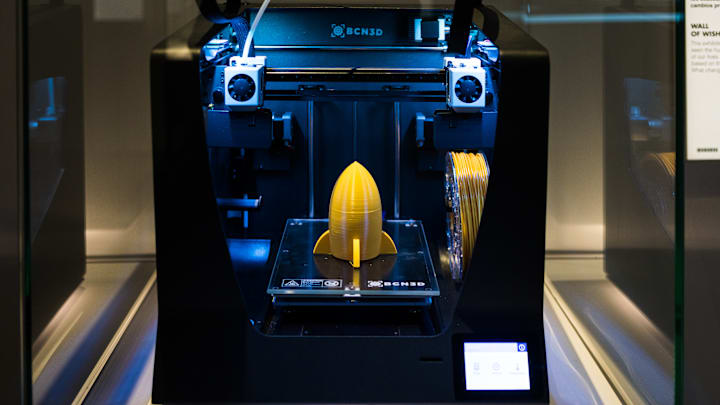3D printing is changing the way we approach DIY projects, allowing us to create things that wouldn’t be possible before. Whether you’re a seasoned tech enthusiast or a curious beginner, keep reading while we introduce you to the world of DIY 3D printing,
What is 3D printing?
3D printing is a form of additive manufacturing that allows you to create 3-dimensional objects by layering material according to a digital design. The cost of this tech has been coming down, and there is now a range of printers for almost every budget and need.
Choosing Your 3D Printer and Materials
Choosing the right 3D printer is crucial for success in DIY projects. Factors like budget, printing volume, and the type of materials you plan to use will influence your decision. Common materials include PLA for its ease of use, ABS for durability, and resin for detailed, high-quality prints.
Common Printer Types
Fused Deposition Modeling (FDM)
Fused Deposition Modeling is the most common type of printer, and it’s a good choice for most hobbyists and beginners. It’s affordable, has a wide range of materials available, and is suitable for producing functional parts.
Stereolithography (SLA)
Stereolithography uses resin to produce high-resolution prints with smooth finishes. It’s a good choice for more detailed projects, but the machines are more expensive, and the prints require more post-processing. The resin is a petroleum-based thermoplastic well-known for its toughness and impact resistance.
Selective Laser Sintering (SLS)
Selective Laser Sintering is more common in industrial settings. The printers are capable of producing complex and durable prints, but the machines are often costly and more than most home builders need.
Printer Materials
PLA is great for beginners, easy to print with, and works with almost all FDM printers. It is a thermoplastic derived from renewable resources like cornstarch, sugarcane, or other plant-based materials, making it more environmentally friendly than petroleum products. It even biodegrades.
ABS: More durable but requires a heated bed and good ventilation due to fumes. It’s a petroleum-based thermoplastic that is well-known for its toughness and impact resistance. You can also drill it if you need to, but the prints require higher temperatures to create and can shrink as they cool.
PETG: A versatile material that combines ease of use with durability, suitable for more advanced projects. You can use it for both indoor and outdoor applications, and the surface often has a glossy finish. However, it’s prone to stringing, and prints can stick to the print bed.
Specialty Materials: If you plan to use flexible, composite, or high-temperature filaments, make sure your printer can handle them.
Designing and Printing Your Gadget
One of the things that is most fun about 3D printing is designing your projects. Using software like Tinkercad or Fusion 360, you can create custom designs tailored to your specific needs for free without much effort. Once your design is ready, you’ll use slicing software to prepare it for printing. It involves setting up the optimal printing parameters, such as layer height, infill density, and support structures, to ensure your gadget prints successfully.
Post-Processing and Assembling
After printing, your gadget may require some post-processing, such as sanding, painting, or assembling multiple parts. For those interested in taking their projects to the next level, integrating electronics or other components can turn a simple 3D print into a fully operational device.
Popular Beginner Printers
- Creality Ender 3 V2
- Prusa i3 MK3S+
- Anycubic i3 Mega S
- Creality CR-10
- Artillery Sidewinder X1
Follow GeekSided for 3D Printing projects and leave comments and questions.
